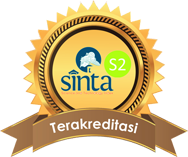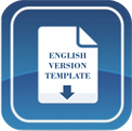Pre-Service Chemistry Teacher’s Conception About Chemistry of The Rare Earth Elements
DOI:
https://doi.org/10.15575/jtk.v7i1.15479Keywords:
conception, inorganic chemistry, pre-service chemistry teacher (PCT), rare earth elementsAbstract
Rare Earth Elements (REE) is an interesting chemistry topic, especially due to current technology development. However, new learning designs of REE need to be developed for Pre-service Chemistry Teachers (PCT) as it is not yet available. A good design is constructed by analyzing PCT pre-conceptions based on the technical difficulties faced by the students during teaching process. The study aims to identify PCT's pre-conceptions focusing on REE topic. We conducted this research involving 17 chemistry education students at the Universitas Pendidikan Indonesia, Bandung. Data was collected through interviews and analyzed using the Qualitative Content Analysis (QCA) method. Our results highlight that PCT had difficulties with chemistry content of REE, especially about electronic configuration, magnetic, and luminescence properties. In addition, PCT faced difficulties correlating electronic configuration's chemistry content into contexts. Based on the interview results, 88.2% of the students agree with the development learning design for undergraduate chemistry students. As a result, we conclude that technical difficulties and misconceptions about REE can be overcome by developing the learning design based on the need of the students. Â
References
Adesoji, F., & Omilani, N. (2012). A comparison of secondary schools students’ levels of conception of qualitative and quantitative inorganic analysis. American Journal of Scientific and Industrial Research, 3(2), 56–61. https://doi.org/10.5251/ajsir.2012.3.2.56.61
American Chemical Society. (2008). ACS Guidelines for Bachelor’s Degree Programs. Retrieved from https://www.acs.org/content/acs/en/education/policies/acs-approval-program/guidelines-supplements.html
Anwar, B., Ernawati, S., Setiadi, R., & Wiji. (2012). Pengembangan Representasi Kimia Sekolah Berbasis Intertekstual Pada Sub-Konsep Konfigurasi Elektron Model Atom Bohr yang Diperluas dalam Bentuk Multimedia. Jurnal Pengajaran Matematika Dan Ilmu Pengetahuan Alam (JPMIPA), 17(278–285). https://doi.org/https://doi.org/10.18269/jpmipa.v17i2.36108
Atwood, D. A. (2012). The Rare Earth Elements: Fundamentals and Applications. Wiley.
Castor, S. B., & Hedrick, J. B. (2006). Rare Earth Elements. In Industrial Minerals and Rocks (7th ed., pp. 769–792). Society for Mining, Metallurgy, and Exploration.
Franco-Mariscal, A. J. (2015). Exploring the Everyday Context of Chemical Elements: Discovering the Elements of Car Components. Journal of Chemical Education, 92(10), 1672–1677. https://doi.org/10.1021/acs.jchemed.5b00164
Franco-Mariscal, A. J. (2018). Discovering the Chemical Elements in Food. Journal of Chemical Education, 95(3), 403–409. https://doi.org/10.1021/acs.jchemed.7b00218
Gurel, D. K., Eryilmaz, A., & McDermott, L. C. (2015). A review and comparison of diagnostic instruments to identify students’ misconceptions in science. Eurasia Journal of Mathematics, Science and Technology Education, 11(5), 989–1008. https://doi.org/10.12973/eurasia.2015.1369a
Hermanns, J. (2021). How do pre-service chemistry teachers rate the importance of content in organic chemistry during their chemistry studies at university? Chemistry Teacher International, 3(4), 359–365. https://doi.org/10.1515/cti-2021-0004
Huang, C. (2010). Rare Earth Coordination Chemistry: Fundamentals and Applications. In Rare Earth Coordination Chemistry: Fundamentals and Applications. https://doi.org/10.1002/9780470824870
Jain, J., Lim, B. K., & Abdullah, N. (2013). Pre-service Teachers’ Conceptions of the Nature of Science. Procedia - Social and Behavioral Sciences, 90(InCULT 2012), 203–210. https://doi.org/10.1016/j.sbspro.2013.07.083
Jha, A. R. (2014). Rare earth materials: Properties and applications. In Rare Earth Materials: Properties and Applications. https://doi.org/10.1201/b17045
Kang, J., & Kang, A. M. (2020). Trend of the research on rare earth elements in environmental science. Environmental Science and Pollution Research, 27(13), 14318–14321. https://doi.org/10.1007/s11356-020-08138-z
Klinger, J. M. (2018). Rare earth elements: Development, sustainability and policy issues. Extractive Industries and Society, 5(1), 1–7. https://doi.org/10.1016/j.exis.2017.12.016
Lewis, E. B., Rivero, A. M., Lucas, L. L., Musson, A. A., & Helding, B. A. (2021). Setting empirically informed content knowledge policy benchmarks for physical science teaching. Journal of Research in Science Teaching, 58(8), 1238–1277. https://doi.org/10.1002/tea.21709
Louise, I. S. Y., Sugiyarto, K. H., & Al, H. P. (2017). Identifikasi Miskonsepsi Konsep Kimia Dan Upaya Mengatasinya Melalui Chemistry Clinic Bagi Pada Guru Anggota Mgmp Kimia. Jurnal Pengabdian Masyarakat MIPA dan Pendidikan MIPA, 1(2), 114-118. https://doi.org/10.21831/jpmmp.v1i2.15569
Mayring, P. (2015). Qualitative content analysis: Theoretical background and procedures. In Approaches to qualitative research in mathematics education (pp. 365–380). Springer, Dordrecht. https://doi.org/10.1007/978-94-017-9181-6_13
Miessler, G. L., & Tarr, D. (2013). Inorganic Chemistry. Pearson Education, Inc.
Niebert, K., & Gropengiesser, H. (2013). The model of educational reconstruction: A framework for the design of theory-based content specific interventions. The example of climate change. Educational Design Research–Part B: Illustrative Cases, 511–531. Retrieved from https://scholar.google.com/citations?view_op=view_citation&hl=id&user=BvidVroAAAAJ&citation_for_view=BvidVroAAAAJ:d1gkVwhDpl0C
Pinarbasi, T., & Canpolat, N. (2003). Students’ Understanding of Solution Chemistry Concepts. Journal of Chemical Education, 80(11), 1328–1332. https://doi.org/10.1021/ed080p1328
Redhana, I. W., Sudria, I. B. N., Hidayat, I., & Merta, L. M. (2017). Identification of chemistry learning problems viewed from conceptual change model. Jurnal Pendidikan IPA Indonesia, 6(2), 356–364. https://doi.org/10.15294/jpii.v6i2.8741
Saputra, O., Setiawan, A., & Rusdiana, D. (2019). Identification of student misconception about static fluid. Journal of Physics: Conference Series, 1157(3), 32069. Retrieved from https://iopscience.iop.org/article/10.1088/1742-6596/1157/3/032069/meta
Suma, K., Wayan Sadia, I., Made Pujani, N., & Ketut Rapi, N. (2019). Investigating students’ preconception of some electromagnet topics. Journal of Physics: Conference Series, 1317(1). https://doi.org/10.1088/1742-6596/1317/1/012203
Supiah YL, I., Sugiyarto, K. H., & Aloysius, H. P. (2017). Miskonsepsi Kimia, Modul Guru Pembelajar. Jurnal Pengabdian Masyarakat MIPA Dan Pendidikan MIPA, 1(2), 114–118.
Suyanti, R. D., Arifin, M., & Martoprawiro, M. A. (2006). Pembekalan Kemampuan Generik Bagi Calon Guru Melalui Perkuliahan Kimia Anorganik Berbasis Multimedia. Jurnal Pendidikan Matematika Dan Sains, 11(2), 107–112. https://doi.org/10.21831/jpms.v11i2.12430
Tal, M., Herscovitz, O., & Dori, Y. J. (2021). Assessing teachers’ knowledge: incorporating context-based learning in chemistry. Chemistry Education Research and Practice, 22(4), 1003–1019. https://doi.org/10.1039/D0RP00359J
Voncken, J. H. L. (2016). The Rare Earth Elements. Springer International Publishing. https://doi.org/10.1007/978-3-319-26809-5
Wilson, C. (2014). Chapter 2&4-Semi-Structured Interviews-Phone Interviews. Interview Techniques for Ux Practitioners. C. Wilson.
Xiao, C., Cai, H., Su, Y., & Shen, L. (2020). Online Teaching Practices and Strategies for Inorganic Chemistry Using a Combined Platform Based on DingTalk, Learning@ZJU, and WeChat. Journal of Chemical Education, 97(9), 2940–2944. https://doi.org/10.1021/acs.jchemed.0c00642
Downloads
Published
How to Cite
Issue
Section
Citation Check
License
Authors who publish with this journal agree to the following terms:
- Authors retain copyright and grant the journal right of first publication with the work simultaneously licensed under a Creative Commons Attribution-ShareAlike that allows others to share the work with an acknowledgement of the work's authorship and initial publication in this journal.
- Authors are able to enter into separate, additional contractual arrangements for the non-exclusive distribution of the journal's published version of the work (e.g., post it to an institutional repository or publish it in a book), with an acknowledgement of its initial publication in this journal.
- Authors are permitted and encouraged to post their work online (e.g., in institutional repositories or on their website) prior to and during the submission process, as it can lead to productive exchanges, as well as earlier and greater citation of published work (See The Effect of Open Access).








